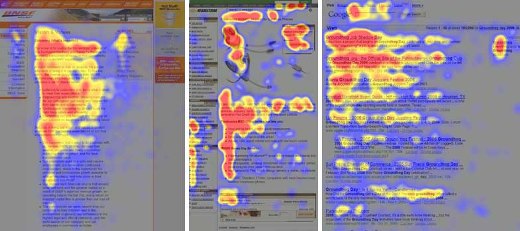According to a study by Jakob Nielsen, when we read a webpage, we actually read in an F-shape, and are likely to ignore the words that fall outside of that template. It’s actually not as bizzare as it sounds. It results from the slow but increasing lack of attention you pay to any given article over the amount of time that you’re reading it. Generally, readers will trudge through the first paragraph of an article and read the whole thing, forming the top stem of the F. Good thing I got the important information out of the way early.
By the second paragraph, the short-stem,
readers have become more uninterested
and only read about half way through any given line,
before skipping down to the next,
as if they’re really going to discover
something life-altering that, for some insane reason,
wasn’t mentioned in the headline
or one or two sentences thereafter.
By the third paragraph, especially after the jump, it’s questionable as to whether or not anyone is actually paying any attention at all, and who could blame them because, frankly, this study just imposes a form on something we already know rather intimately; we aren’t as attentive at the end of an article as we are at the beginning. A lot of this can be attributed to increasingly brief forms of internet communication like the tweet or the Facebook status, which rarely stretch beyond a line or two and usually don’t contain much important information after the words “For lunch I had” or “It really bugs me when.” Regardless, you can expect this story to be covered in a number of your favorite blogs if for no other reason than the fact that it allows the author to ramble on and talk about how you aren’t even reading anymore. Did you know you also listen in an F-Shaped pattern? Specifically when people are whining at you? Well, you don’t, but the chances you’re even paying attention by this point are slim, which is why I’m letting myself ramble and not bothering to fix the speling and formatting errors I’ve maed. Below are some images of what this reading pattern really looks like. Is that a solid enough line to go out on? It probably doesn’t matter anyway.
(via The Next Web)









Published: Jul 11, 2011 11:44 am